Your garden presents an ideal opportunity for wildlife to flourish- creating a wildlife-friendly garden is not only beneficial for the environment but also a rewarding experience as you invite various creatures to share your outdoor space.
Creating a Wildlife Oasis
There are 3 basic things you can do to help and encourage wildlife into your garden:
- Provide Food– Plant a diverse range of flowers, shrubs, and trees that produce nectar, pollen, berries, and seeds throughout the year. Set up bird feeders with different types of seeds to attract a variety of bird species and attract hedgehogs by putting out some specialist hedgehog food
- Provide Water– Create a water feature, like a small pond, birdbath, or shallow dish, to provide a fresh water source for birds, insects, and small mammals. Ensure that the water is clean and accessible, especially during dry periods
- Provide Shelter– Incorporate a mix of vegetation heights, from tall trees to low-growing plants, to offer shelter for different wildlife. Deadwood, rock piles, and leaf litter provide great hiding spots and nesting sites for insects, amphibians, and small mammals. Install birdhouses and nesting boxes for different bird species. Different birds have different nesting preferences, so offer a variety of designs and sizes.
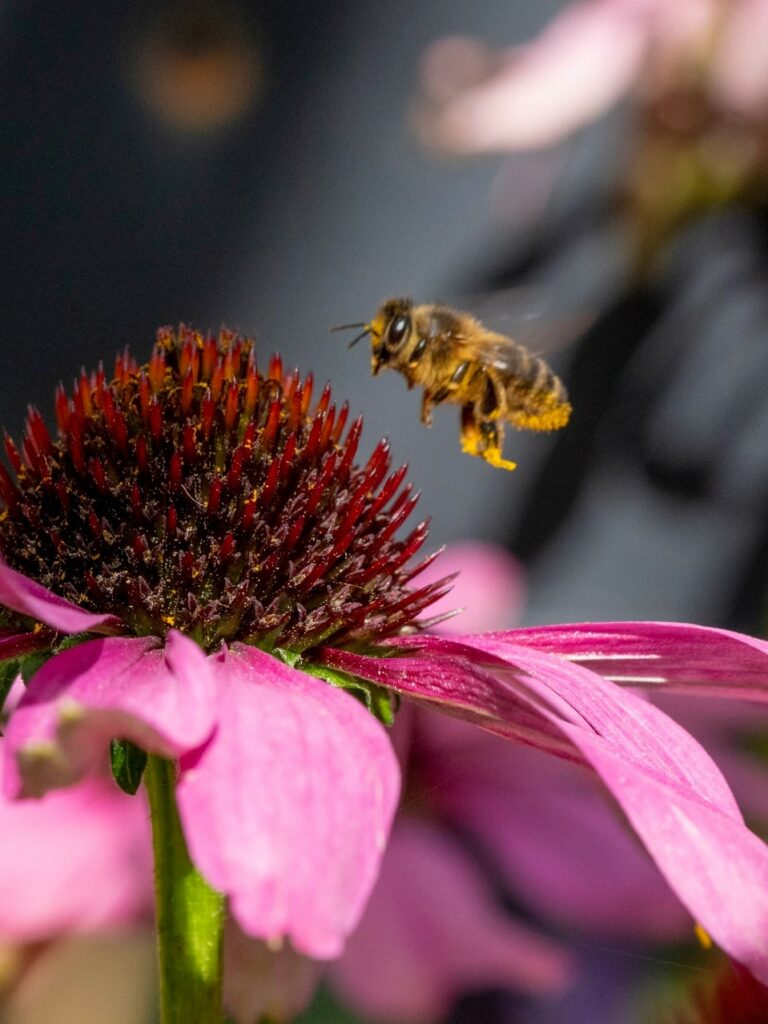
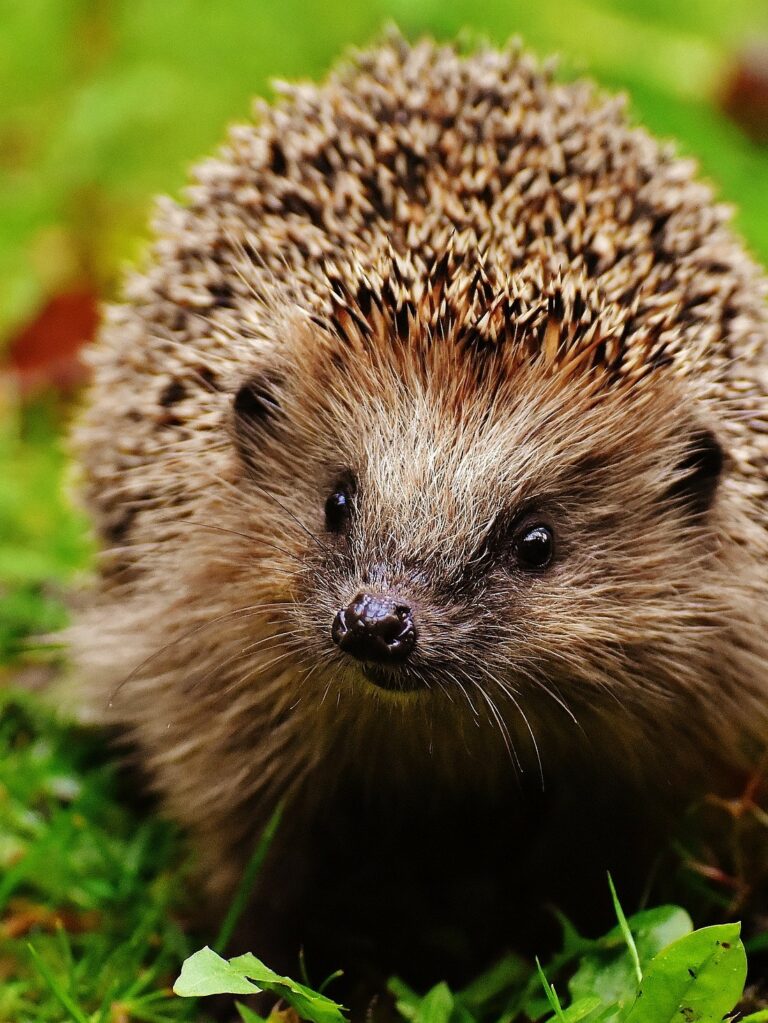
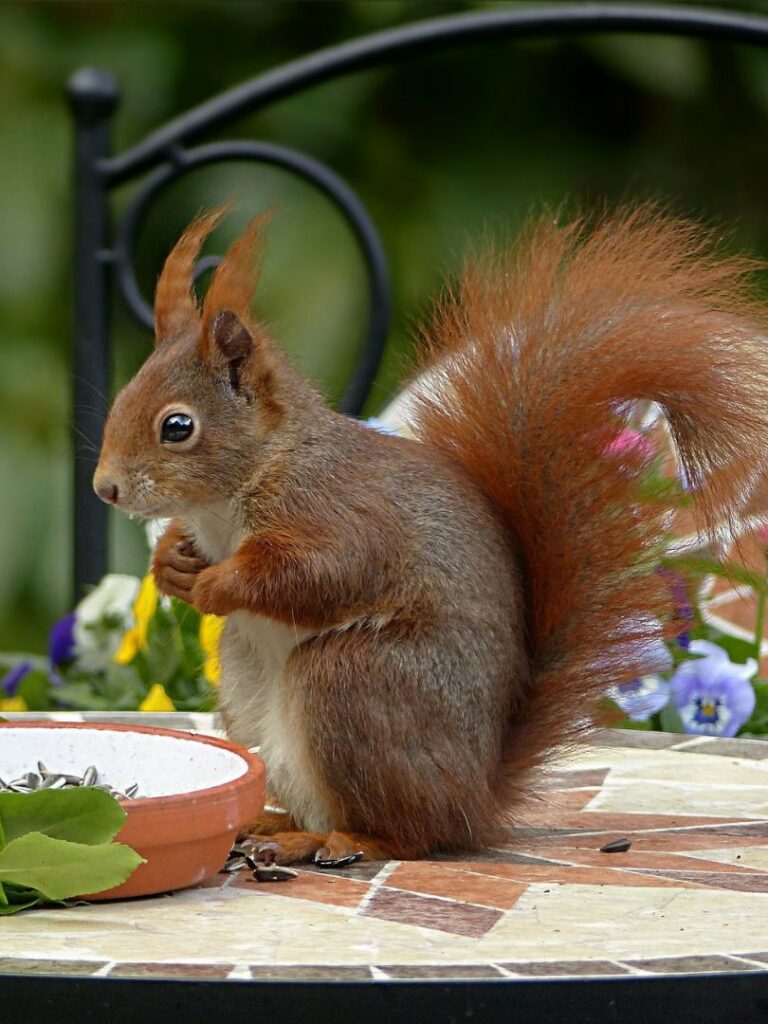
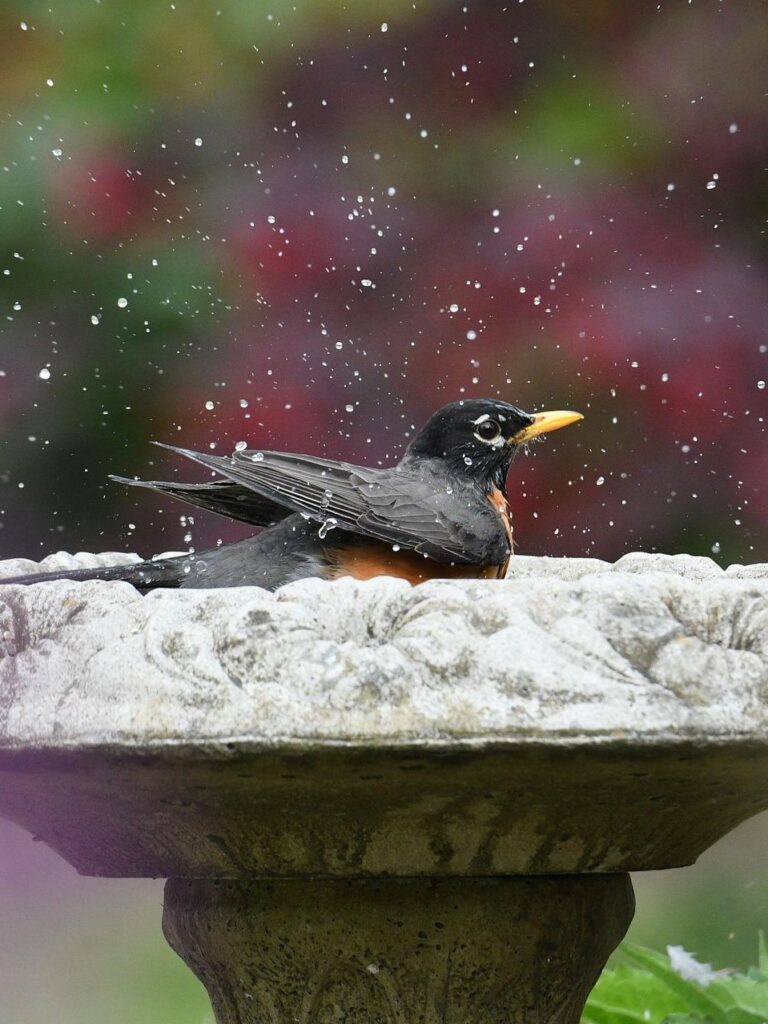
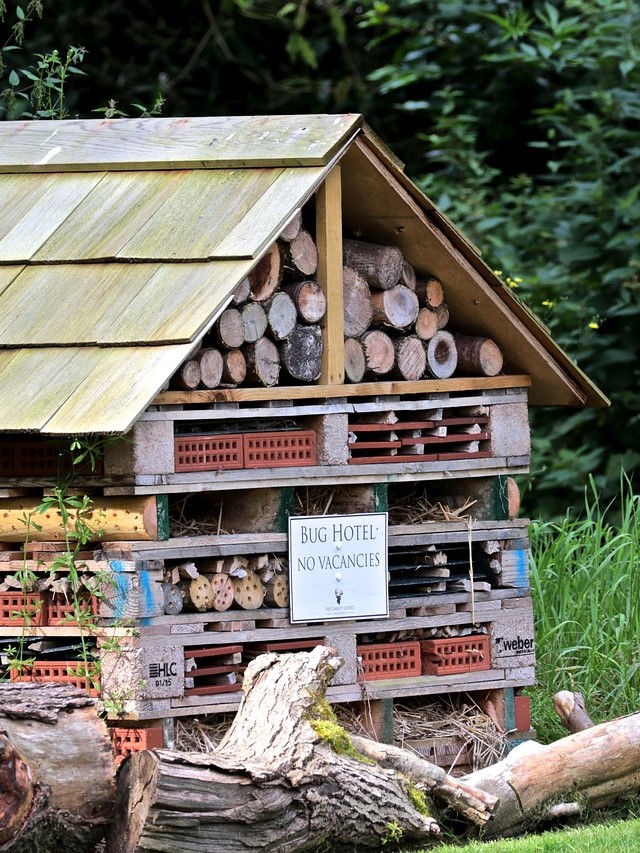
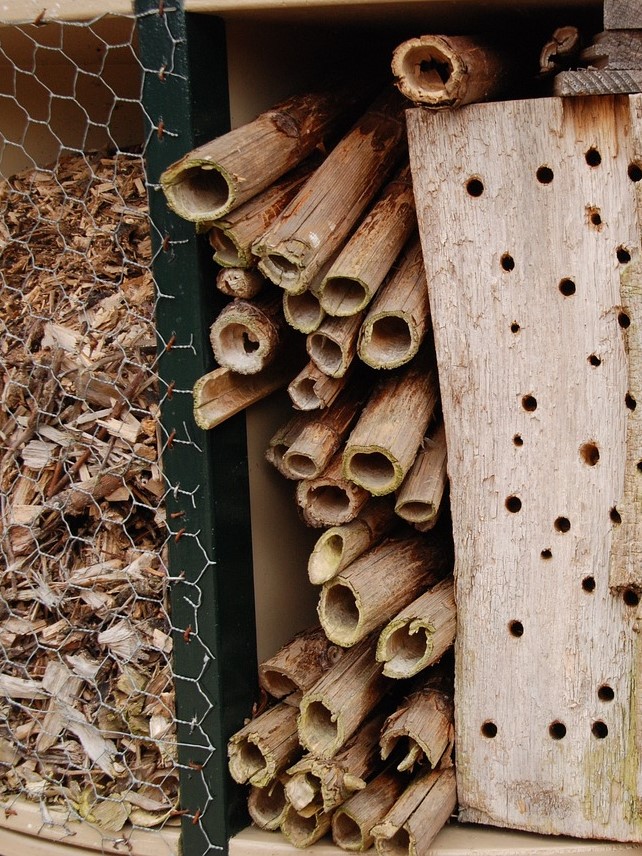
Creating a Bug Hotel
Building a bug hotel is a fantastic way to provide shelter and habitat for various beneficial insects in your garden. It’s a fun and creative project that can be adapted to suit the available materials and the types of bugs you want to attract.
Materials Needed:
Wooden pallet or sturdy wooden frame
Bamboo canes or hollow plant stems
Logs or tree branches with drilled holes
Pine cones
Dry leaves, straw, moss, bark, twigs
Clay pots or terracotta pipes
Hammer and nails, or screws
Garden wire or strong twine
Building:
Location- Select a sheltered spot in your garden that receives some sunlight and is close to vegetation.
Prepare the frame- If using a wooden pallet, remove any protruding nails or staples. Otherwise, assemble a sturdy wooden frame using scrap wood. The size can vary, but a good starting point is about 2-3 feet (60-90 cm) tall and wide.
Create Compartments- Divide the bug hotel into sections or compartments. Each compartment can be filled with different materials to accommodate various insects.
- Bamboo Canes and Hollow Plant Stems: Bundle together bamboo canes or hollow plant stems of varying sizes. Secure them tightly with garden wire or twine, then place them vertically inside one compartment.
- Drilled Logs or Tree Branches: Drill holes of different diameters (ranging from 1/8 inch to 3/4 inch) into logs or tree branches. Insert them horizontally into another compartment, making sure the holes face outwards.
- Pine Cones, Dry Leaves, and Straw: Fill a compartment with pine cones, dry leaves, and straw. These materials offer nooks and crannies for bugs to hide and nest.
- Clay Pots or Terracotta Pipes: Place clay pots or terracotta pipes in a stack, providing additional shelter for insects.
- Moss, Bark, and Natural Materials: Fill a compartment with moss, bark, and other natural materials to create a cozy environment for bugs.
- Add twigs & sticks between the compartments to provide additional nooks and perching sports for bugs.
Install the bug hotel- Secure the bug hotel to a fence, wall, or a sturdy post using nails, screws, or strong wire.